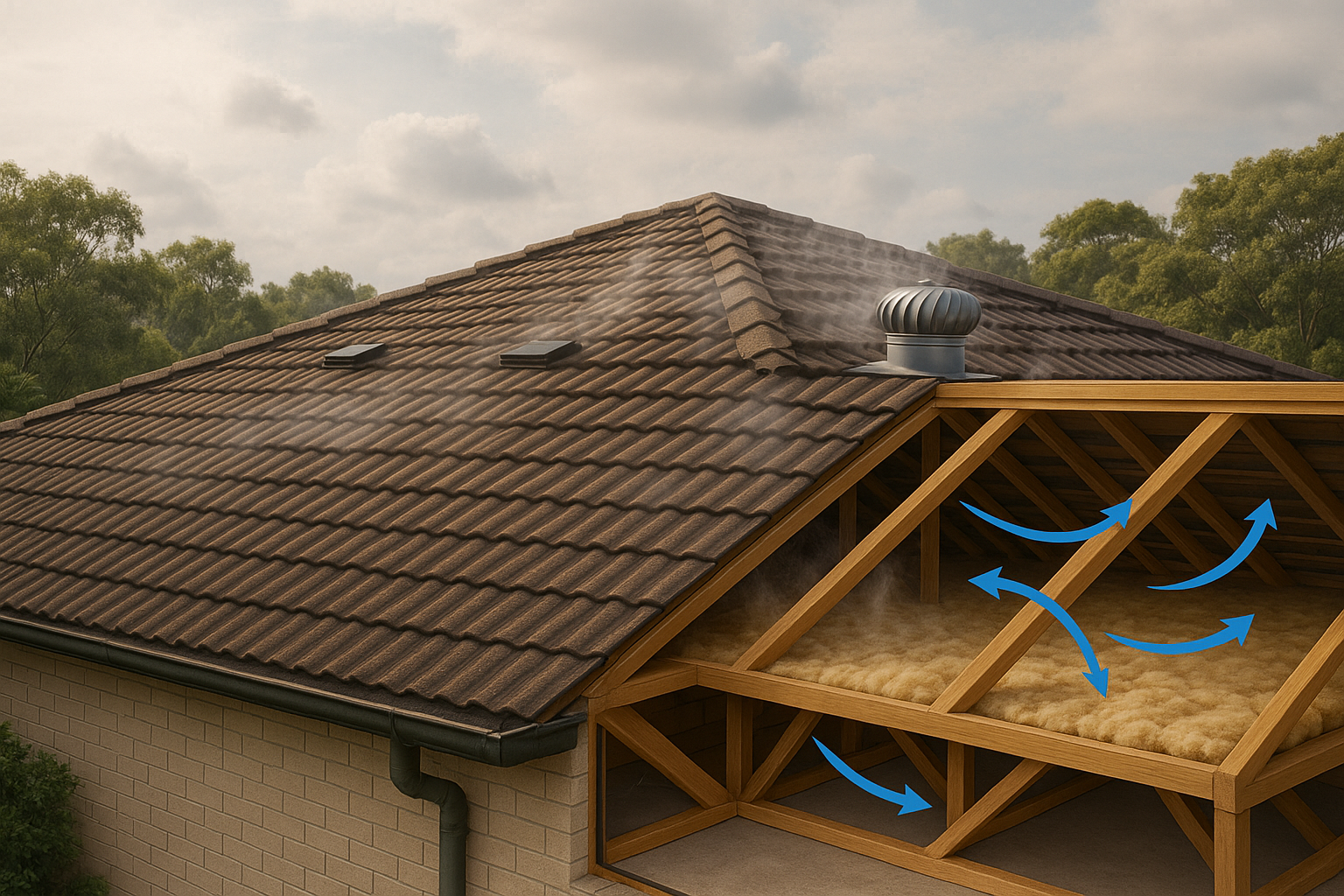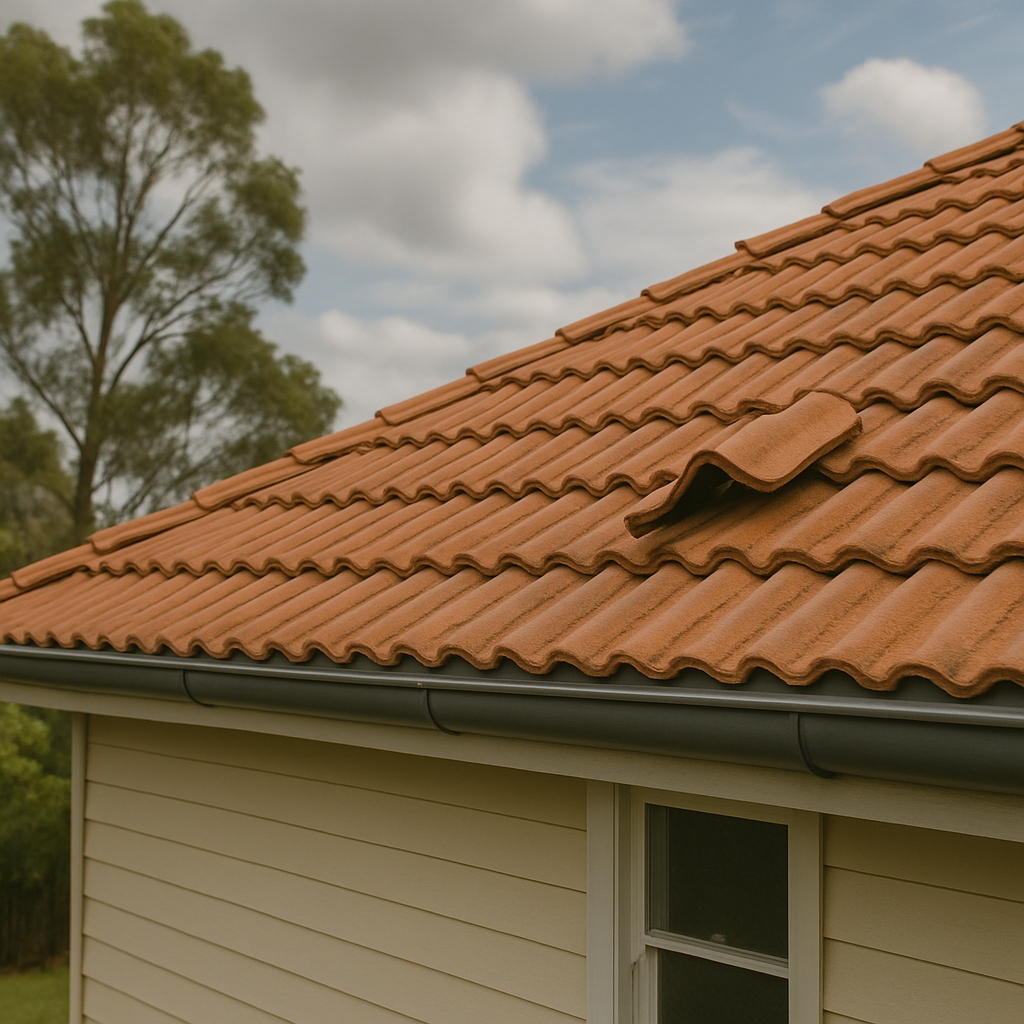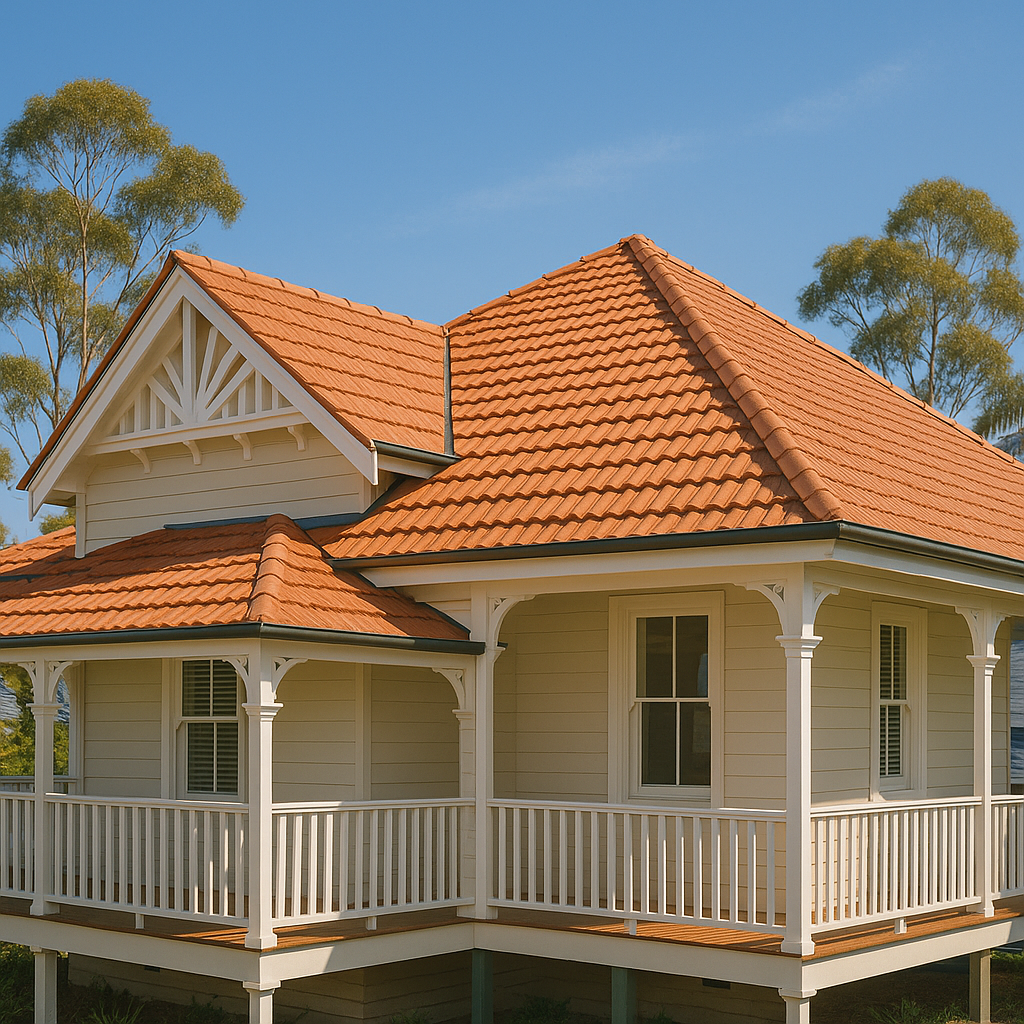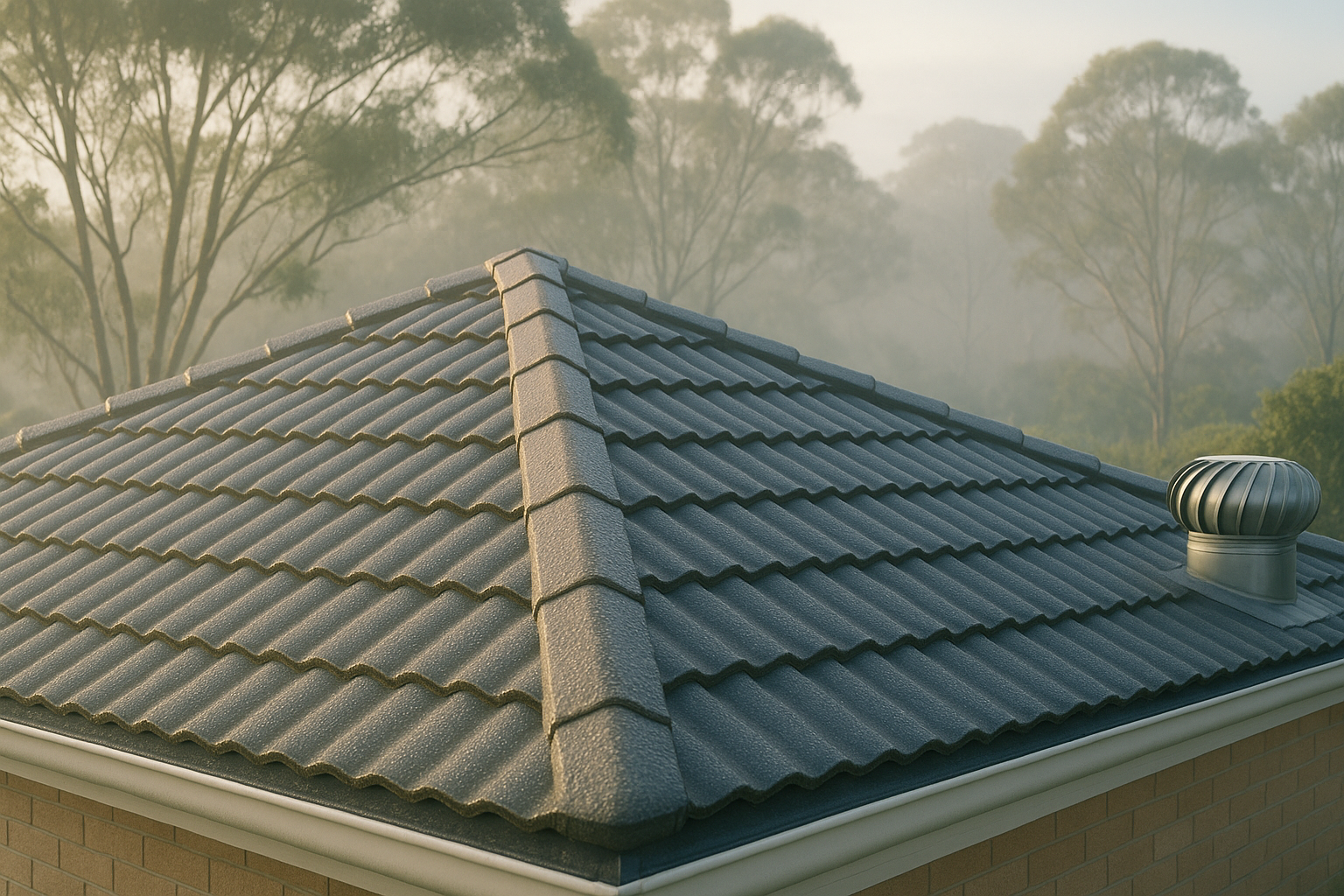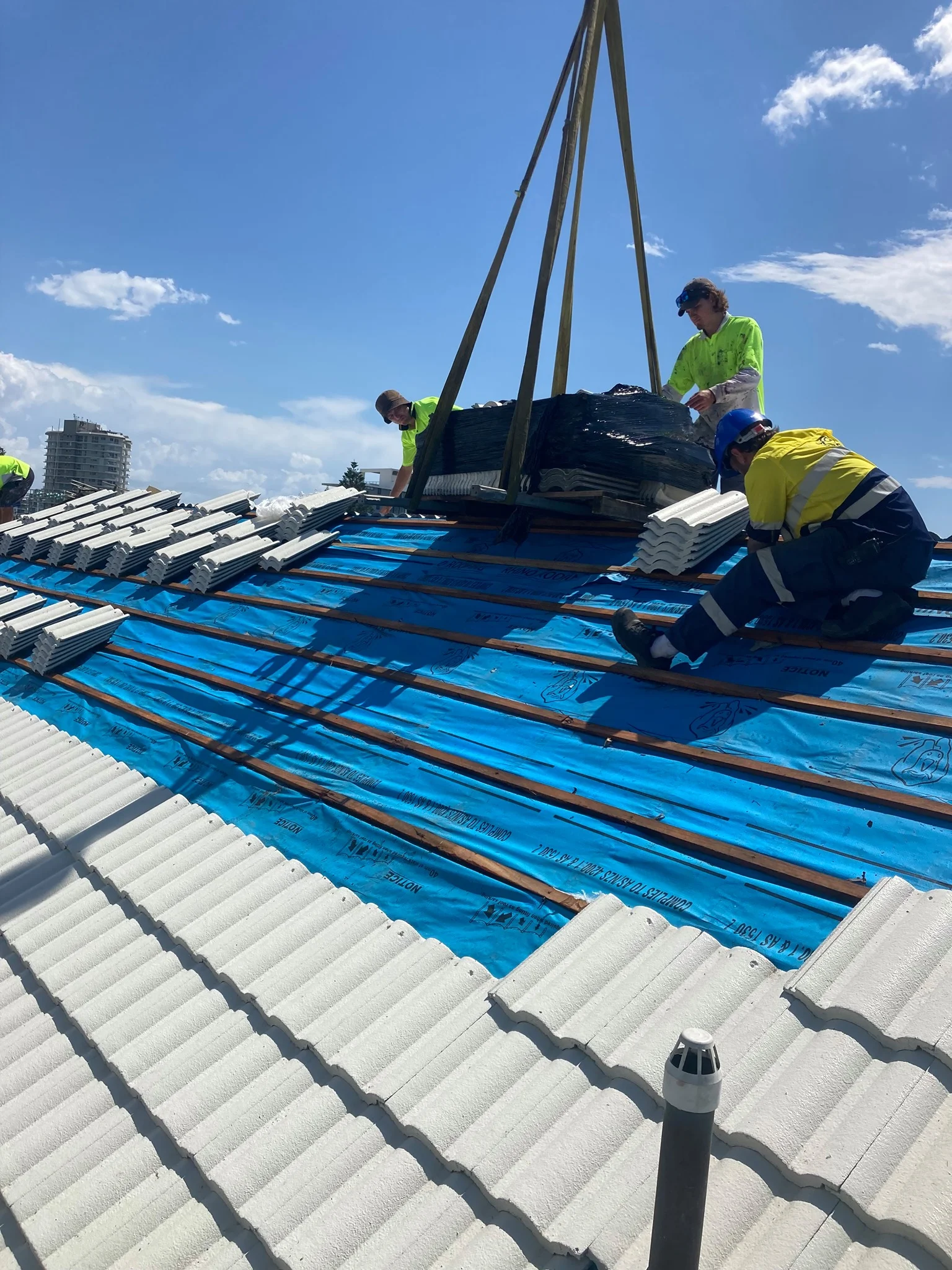When most people think about roof ventilation, they picture metal roofing and hot tin sheds. But tiled roofs, especially in Queensland’s warm, humid climate, benefit just as much from proper ventilation.
Whether you’re in Brisbane or the Gold Coast, understanding how roof vents work with tiled roofing can help improve your home’s comfort, reduce moisture build-up, and protect the structure of your roof over time. In this blog, we’ll break down why roof ventilation matters and how it supports long-term performance for tiled roofs.
What Does Roof Ventilation Actually Do?
Roof ventilation works by promoting airflow through your roof cavity. This helps regulate internal temperatures and controls moisture levels in the space between your tiles and ceiling. Especially important in Queensland homes that deal with both intense summer heat and seasonal humidity.
Without adequate ventilation, your tiled roof space can trap heat and moisture, creating the perfect environment for mould growth, timber rot, and insulation damage.
Why It’s Especially Important for Tiled Roofs in Queensland
Tiled roofs might seem more breathable than metal roofs, but they’re still vulnerable to heat and moisture retention, especially under tightly sealed sarking and insulation layers.
Key reasons ventilation is critical in tiled roofing systems:
- Humidity control: Queensland’s climate means plenty of moisture in the air. Without vents, this moisture can condense inside the roof cavity, damaging timber trusses and reducing insulation performance.
- Mould and mildew prevention: Poor ventilation allows humid air to sit stagnant in your roof, encouraging mould growth that can creep into ceilings and wall cavities.
- Heat reduction: In summer, heat builds up beneath tiles and radiates into the living space below. Ventilation helps release this trapped heat, making your home more comfortable.
- Tile longevity: Proper airflow reduces the chances of condensation forming under the tiles, which can weaken battens and cause deterioration over time.
Signs Your Tiled Roof May Not Be Ventilating Properly
It’s not always obvious, but there are a few things to watch for:
- Your ceiling feels warm even at night
- You notice a musty smell in your home or roof space
- Mould spots start to appear on ceilings or in the corners of rooms
- You’ve had persistent condensation or minor leaks with no visible broken tiles
- Insulation feels damp or underperforms in both summer and winter
If any of these sound familiar, poor ventilation could be part of the problem.
Types of Roof Vents for Tiled Roofs
There are several options when it comes to ventilating a tiled roof:
- Whirlybirds: These wind-powered vents are popular for tiled roofs because they’re affordable and work continuously without electricity.
- Static vents: Low-profile and passive, these allow airflow without moving parts.
- Powered vents: Solar or electrically driven options can help actively draw out humid or hot air.
- Sarking vents: These allow airflow beneath sarking and between insulation layers, improving performance in newer builds.
It’s important to choose a venting system that suits the pitch, layout, and structure of your tiled roof, a professional roofer can guide you on what’s most effective.
Do Tiled Roofs Ventilate Themselves?
A common myth is that tiled roofs “breathe” on their own thanks to their construction. While some older roofs may have gaps that allow limited airflow, modern roofs with sarking, insulation, and tighter seals are far more enclosed, and therefore much more dependent on dedicated vents.
Should You Add Roof Vents During a Restoration?
Absolutely. If you’re restoring or repairing your tiled roof, it’s the ideal time to assess your roof cavity’s ventilation. Adding or upgrading vents during this process can drastically improve your home’s efficiency, comfort, and long-term roof health.
Final Thoughts
Roof vents might not be the flashiest feature of your home, but for tiled roofs in humid areas like Brisbane and the Gold Coast, they’re essential. Proper ventilation helps regulate temperature, prevent moisture issues, and extend the lifespan of your roof.
At Storm Call Roofing Projects, we include ventilation assessments with every restoration and repair job. If you’re unsure whether your roof is ventilating properly, or want advice on improving airflow, get in touch with our team. We’ll make sure your tiled roof performs at its best in every season.

